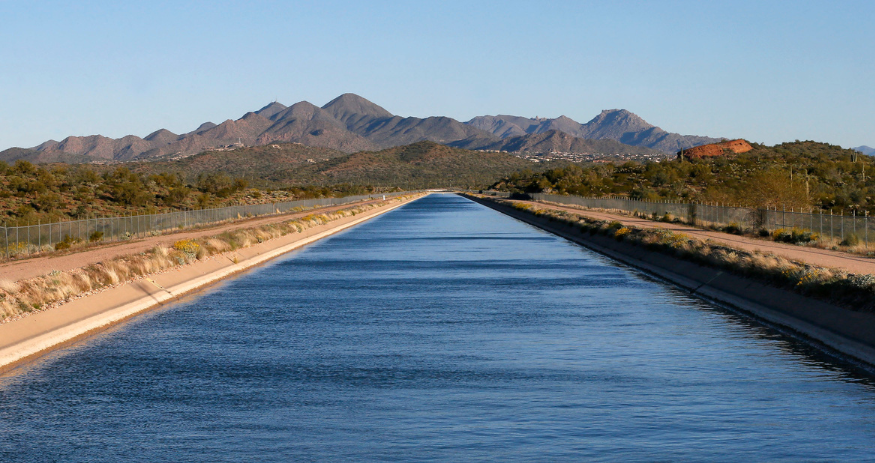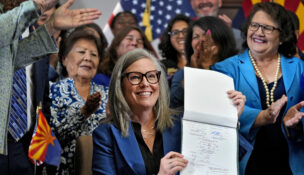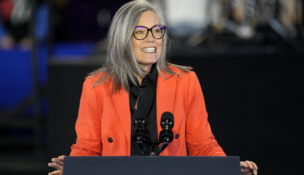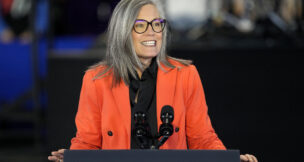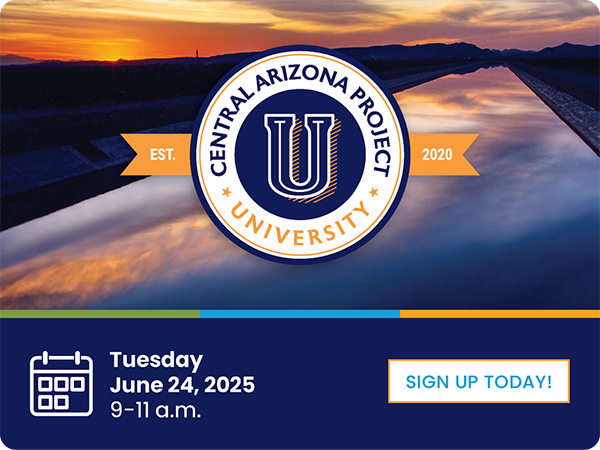Arizona approves first water transfer to rural areas for new construction
Howard Fischer, Capitol Media Services//July 21, 2025//
Arizona approves first water transfer to rural areas for new construction
Howard Fischer, Capitol Media Services//July 21, 2025//
Key Points:
-
Arizona approves first-ever water transfer from rural Arizona to active management areas
-
Buckeye is now allowed to withdraw nearly 6,000 acre-feet of water from Harquahala basin
-
Transfer will serve over 17,000 homes in Buckeye for 110 years
State water officials approved the first-ever legal transfer of water from rural Arizona into one of the state’s “active management areas” on July 18.
The Department of Water Resources will permit Buckeye to withdraw up to 5,926 acre-feet of water annually from the Harquahala basin in western Arizona for up to 110 years. That is enough to serve more than 17,000 homes.
In the same order, the agency said Queen Creek can take up to 5,000 acre-feet a year, sufficient to build about 15,000 homes.
All this comes two years after DWR refused to issue any permits for new subdivisions in some areas of both communities after concluding they lacked the legally required 100-year supply of water. That resulted in a lawsuit by the Home Builders Association of Central Arizona, which charged that the agency’s modeling is flawed.
None of what occurred Friday is likely to end the legal disputes over how the state implements the historic 1980 Groundwater Act, a foundational water regulation measure which ties development to available water. However, it could alleviate some of the pressure on developers who have argued that the inability to build in the far suburbs of Phoenix has barred them from developing on some of the last affordable land, which, in turn, has driven up the price of housing in Arizona.
It also is unlikely to provide help to residents of the state’s other active management areas who are running into problems maintaining the necessary supply of water for sustained growth.
That’s because the law the agency used to provide the permission to Buckeye and Queen Creek spells out that there are only three places outside active management areas where transfer of water is allowed. Harquahala is the largest of them.
But there are concerns that this approval, touted in a press release from Gov. Katie Hobbs, amounts to only an interim solution to a much larger problem.
Underlying all of this is the need for developers to demonstrate a 100-year supply of water to be state approved for construction.
That’s not an issue for municipal and private water companies, which can demonstrate they have sufficient water, including through contracts to obtain supply from the Colorado River.
They are presumed to have their own assured supply. So anyone the utility agrees to serve who is seeking to build homes within that service territory is presumed to have the amount of water required and can start construction without further approval.
Queen Creek and Buckeye, however, don’t have such assurances, which led state water chief Tom Buschatzke to conclude in 2023 that the state cannot guarantee there will be enough groundwater to support new development in these areas.
But Buschatzke said construction can take place if developers find sources beyond what’s under their land. And what occurred Friday paves the way for some of that.
“This approval from the Arizona Department of Water Resources unlocks another water supply that Arizona can use to support our communities, economy, and way of life,” Gov. Katie Hobbs said.
Senate Minority Leader Priya Sundareshan acknowledged that what DWR did is legal and in accordance with decades-old laws that set aside water beneath the Harquahala Valley for purchase from landowners to be piped where needed. But the Tucson Democrat said she remains skeptical of the longevity of the solution.
“I don’t think it solves anyone’s problems really on a permanent basis,” said the Tucson Democrat. Beyond that, she said the whole concept of denoting one area of the state as a place that other areas can raid for water is “philosophically wrong.”
That impact of such use has crossed the mind of Sarah Porter, the director of the Kyl Center for Water Policy at Arizona State University.
“The total amount of water that Buckeye and Queen Creek can withdraw over 110 years is a great deal of water,” she said, amounting to more than a million acre feet. “This is an area where less than 2% of the rain that falls results in recharge.”
So is the transfer good news?
“It’s good news for Buckeye and Queen Creek,” Porter said. “These are two of the communities that are more challenged to have continued development unless they bring in new water supplies.”
But Porter, like Sundareshan, said this inter-basin transfer isn’t a total solution to ensuring that Arizona has enough water to continue to grow — especially with shortages of Colorado River water and the chances that the recent drought will shrink available supplies.
“Increasingly, there’s a recognition that we need to find some other water supplies,” Porter said, both for the Phoenix and Tucson areas.
“It’s going to be incremental,” she said. “And this is one of those incremental opportunities.”
She said that some other options are already being advanced.
One is the newly approved “Ag-to-Urban” legislation, which allows developers to acquire water rights from farmers who are retiring their land from agriculture.
Sundareshan said that it is the preferred choice when considering taking water from the Harquahala Valley, mainly because it ensures that one area of the state is not robbing the supply from another area. In fact, the new law not only limits where this new development can occur — within a mile of the retired farmland — but also caps the amount of water that can be withdrawn.
What’s also likely to be a source is “advanced water purification,’ a process that essentially purifies sewage to the point where it can be put back into the drinking water supply. While some communities are beginning to move in that direction, there has been some pushback against this approach.
And there’s something else that will prevent new construction from starting in those far edges of Phoenix that are affected.
Simply getting permission to transfer the water is just the first step. State water officials said the cities will need to demonstrate that they have a method for delivering the water, a process that could take years and millions of dollars, before any building permits that rely on that water are issued.
Despite that, officials of both cities said they were pleased by Friday’s development.
“This has been years in the making and will help diversify the town’s water portfolio with a more sustainable source of water that has been set aside for growth in the state,” said Queen Creek Mayor Julia Wheatley in a prepared statement. And Eric Osborn, her Buckeye counterpart, called it “a significant development … to ensure our current and future residents continue enjoying a great quality of life.”
There’s also a benefit for Harquahala Valley landowners, who will gain financially as they exit the farming business.
“This transition from farming to renewable energy was the long-term plan for this area, and we are grateful to be part of this process,” said David Lamoreax, who said his family has been farming in Arizona for more than 100 years.

